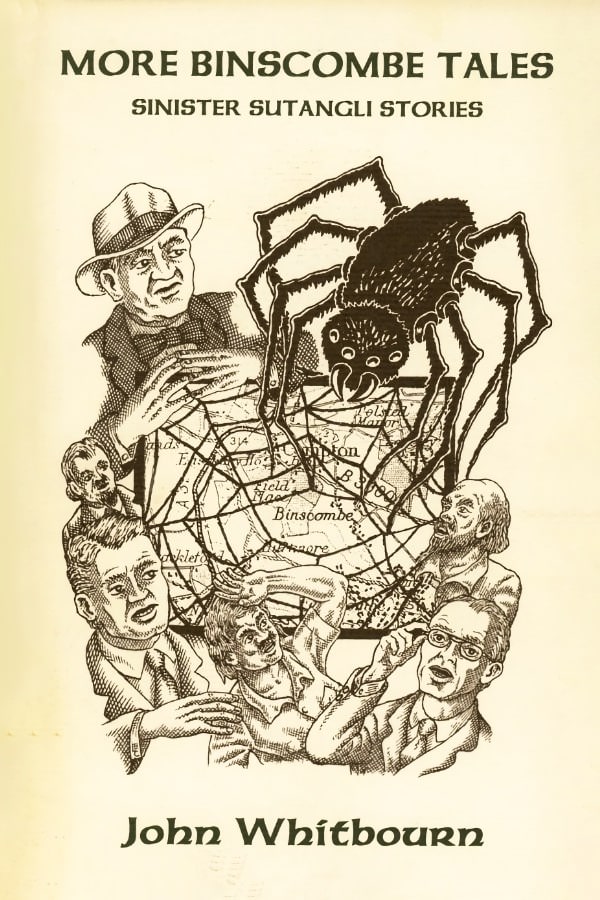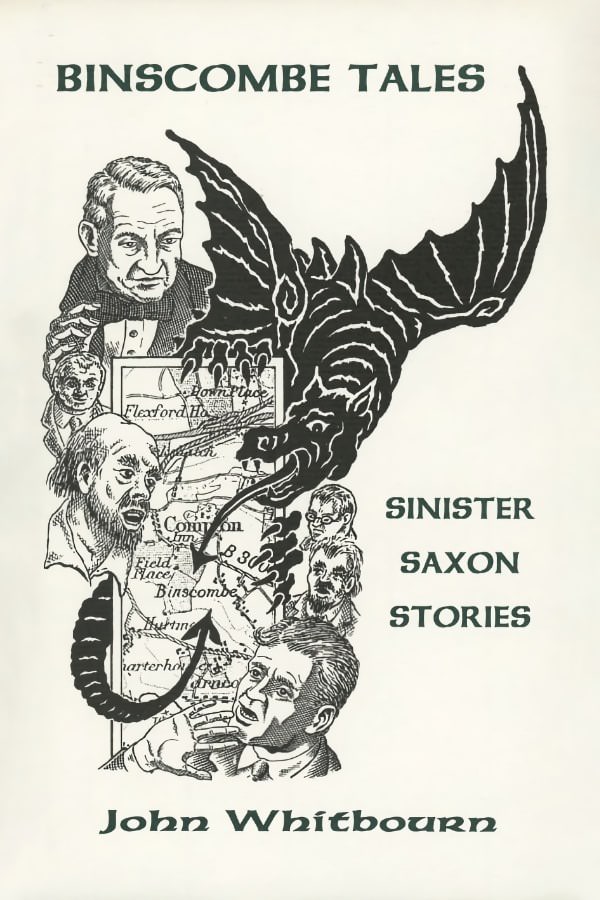More Binscombe Tales: Sinister Sutangli Stories

Written by John Whitbourn
Dust Jacket illustration by Alan Hunter
Limited to 600 copies
ISBN: 1-899562-72-9; xvi + 227pp; Hardcover; Published April 23, 1999
Original Price: C$60.00 / US$50.00 / £31.00
Related Titles
The charters of Æthelbad . . . confirm Bede's statement about the extent of his powers. An original, dated 736, describes him as 'king not only of the Mercians but also of all provinces which are called by the general name Sutangli, that is South English .
What could be more appropriate than that the continuing chronicles of Binscombe, that most English of English towns in the south of the country, should be published on the National Day—St George's Day [1999]?
Binscombe has a long and well-documented past. John Whitbourn's stories, however, concern another Binscombe: one which is a slightly sinister, far less reassuring place than its real counterpart. In this Binscombe, things are seldom what they seem, and people should not be taken at face value.
No one has learned this lesson more thoroughly than Mr Oakley, a relative newcomer to the area whose family has long had roots there. It is through his eyes that we see life in Binscombe, and encounter the decidedly strange people and events contributing to everyday life in this most singular of towns. It is a place where a trip to the seaside is not always the innocent, fun-filled affair it may seem; where the simple act of buying a desk is fraught with danger; and where Oliver Cromwell is much more than simply a name from the history books.
Most mysterious of all, perhaps, is the identity of Mr Disvan, Oakley's guide to life in Binscombe. It is an identity which is finally revealed in the final story, 'Up from the Cellar' or 'England Expects!', which concludes (possibly) the Binscombe Tales and proves the truth of the local saying that 'They always come back'.
More Binscombe Tales: Sinister Sutangli Stories—a companion to 1998's Binscombe Tales: Sinister Saxon Stories—contains the final twelve stories in the Binscombe saga, five of which are published here for the first time. There is also an introduction by the author, and a lengthy afterword in which he discusses plots and ideas for several Binscombe Tales which will never, alas, be written.
Contents:
- Foreword
- "An Overview and Cheerio, or A Sutangli Speaks!" by John Whitbourn
- It Has Been Said . . .
- No Truce With Kings
- Let the Train Take the Strain
- Rollover Night
- Yankee Go Home
- Canterbury's Dilemma
- Every Little Breeze . . .
- Oh, I Do Like to be Beside the Seaside (Within Reason)
- But After This, the Judgement
- It'll All be Over by Christmas
- I Could a Tale Unfold
- Up from the Cellar, or, England Expects!
- Stories I'll Never Get Round to Writing

